Theme 3: Designating Species-at-Risk
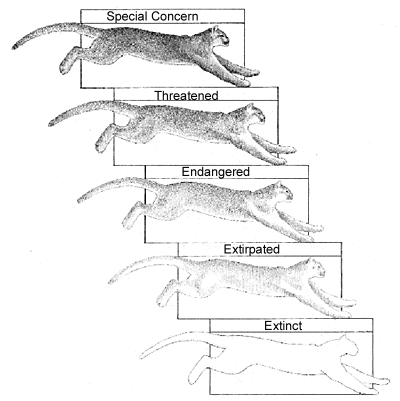 |
|
eastern cougar
|
The survival of nature depends not on intensified human management,
but on a dramatic and fundamental shift in the way human beings and
human institutions are able to perceive and receive the world around them.
(Endangered Spaces: The Future for Canada's Wilderness.
1989. pg. 246)
Overview
This theme outlines the processes involved in designating species at risk.
International, national and provincial regulations and legislation are detailed here,
including the Convention on International Trade in Endangered Species (CITES),
The Committee on the Status of Endangered Wildlife in Canada (COSEWIC),
the Recovery of Nationally Endangered Wildlife (RENEW), and COSSARO,
the Committee on the Status of Species at Risk in Ontario.
"The ranking and grading of all of
nature depend ultimately on what human beings decide"
(from John A. Livingston in Nature for the Sake of Nature, Endangered Spaces, pg. 238)
Does that sound a bit like the evasive but warning words of the cheshire
cat in Alice in Wonderland? Maybe. But it is true.
Whether a species is officially recognized as "at risk" does depend on what we decide is real.
There are many, many factors that come in to play before a species is put on the list.
For example, is the species in question a species or a subspecies? Is there
enough known about it to even make that decision? Has the species in question
been studied and over a long enough period of time in its ecosystem to know
whether it naturally occurs in low numbers, is a peripheral species, or whether external
circumstances are causing its numbers to decline? And, there's always the
"money question": are sufficient funds available to even study
the species? Enough funds to publish the research results? Have the results
been reviewed by a panel of experts who are ultimately responsible for
deciding whether a species should be put on a species at risk list? If so, how
will the species be listed? And what, if anything, can be done to save the
species if it is found to be at risk?
Although a species may be in jeopardy, putting it on the list involves
a process, one that does not happen simply -- nor does it happen
for all the species that might be at risk.
Designating species at risk
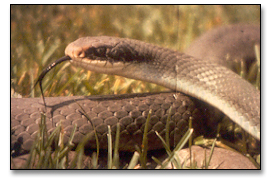 |
|
blue racer.
Photo: FON |
To designate is to label or name something. Putting a species on an at-risk list is equivalent to putting out a warning that this species is in some type of peril, and that it may require a program to
protect it and its habitat.
Designating a species as at risk is not the same as protecting it.
But first, we will look at how a species is so designated.
Next we will consider the elements that might be used to control the factors that
cause it to be at risk.
Governments at national, international, provincial, and territorial levels have developed
various processes for classifying species at risk in order to help identify
the species and the factors
contributing to its decline, as well as determining how best to ensure that the
species at risk does not decline
further.
Legislation plays a significant role in how species at risk are treated,
and is dealt with separately in Theme 4.
International processes
Endangered species are found in every country in the world. So we must take co-operative steps
to preserve biodiversity and to protect endangered species and habitats around the world.
In addition, as species travel through or over different countries and jurisdictions, they
are exposed to a variety of management programs, if any, in different places.
This has created the need for organizations and conventions with
international mandates. Two of the most significant are
the Convention on International Trade in Endangered Species of Wild Flora and Fauna
(CITES), and the Convention on Biological Diversity.
The Convention on International Trade in Endangered Species of Wild Flora and Fauna
(otherwise known as "CITES," (pronounced site-eez) is an international trade agreement that was established in 1973 to regulate trade in specific animals and plants, as well as trade in animal organs and parts. Its primary goal is to reduce the number of species that are killed or poached for their skins, bones and other parts, and reduce their excessive commercial exploitation.
Under the CITES agreement, species may not be imported or
exported
without a CITES permit. This applies to living plants and animals for arboretums and zoos, as well as any parts of them (elephant tusks or bear paws), or articles made from them (alligator skin shoes,
or clothing made from lynx fur).
Canada is one of over 150 nations that are signatories to CITES. These
countries impose import and export regulations on more than 1000 of the
world's most threatened species. CITES affects all consumers, especially tourists, pet dealers, private collectors, members
of the fur industry, horticulturists,
museums and zoos, and even some working in scientific fields.
Unfortunately, as long as there is a demand for species as pets, or cultivars, or their parts (for example, alligator clothing accessories or medicinal components) there is motive to kill or capture even CITES-listed species.
CITES classifies species in accordance with the appendices listed below:
-
Appendix I
-
Species considered rare or endangered, or threatened with extinction which are or may become affected by trade.
Appendix I species cannot be imported or exported unless a permit is issued from both the country of origin and the destination country.
Examples of Appendix I species include African crocodiles and the large
spotted cats, extremely endangered species globally.
-
Appendix II
-
Species not currently considered endangered or rare or threatened with extinction, but that could become so if trade is not strictly
regulated.
Appendix II species require that a permit be issued from the country of export.
Species listed in Appendix II include cacti, most monkeys, and bears.
-
Appendix III
-
Species that may not be endangered worldwide but that are considered vulnerable in a given country and, therefore, are protected or carefully monitored within that country.
Appendix III species require a permit from the exporting country.
An example of an Appendix III species is the
walrus, the northwest Atlantic walrus being
listed in Canada under COSEWIC as extirpated.
Examples of animals and plants covered by CITES include all otters, wolves, bears, whales and dolphins, cats (except domestic ones), elephants, rhinos, monkeys and apes, hawks, eagles, owls, most vultures, parrots (except the budgies), crocodiles, alligators, caimans, larger snakes, marine turtles, most tortoises, chameleons, venomous or bearded lizards, monitor lizards and dragons, bird-wing butterflies, orchids, and cacti. Canadian species covered by CITES include
the eastern cougar, the leatherback turtle, black and grizzly bears, wolves, and lynx, to name but a few.
In Canada, permits to import or export species listed by CITES must be obtained from the governing jurisdiction. The Canadian Wildlife Service (CWS) has the responsibility to enforce CITES in Canada and issues import permits for all convention species, including export permits for migratory birds, marine species and fish. Export permits for other species can be obtained from the government agency of the jurisdiction from which the species originates.
This being said, having signed onto the CITES Agreement does not necessarily ensure that a country will strictly enforce CITES. For example, for many small or poor nations a major source of income is generated by the sale of endangered species or their parts.
Some customs officials "look the other way" when these species, or articles made from them, leave or enter a country.
In this way, the trade continues, albeit illegally. And other countries avoid enforcing CITES by signing onto the Agreement but backing out of certain elements or statutes.
Regulating and enforcing regulations to curtail trade in species is important.
However, pro-active and co-operative approaches to conserving biodiversity must complement any steps taken on the
international playing field.
To this end, the Convention on Biological Diversity is the first global, comprehensive agreement to address this, and is a fundamental part of the global awareness of and movement toward sustainable development.
The Convention is an international legal instrument spelling out the rights and obligations of the signatories regarding scientific, technical and technological
co-operation, and provides for the financial realities of conserving biodiversity. It promotes co-operation among countries, including scientific and technical
co-operation, access to (and exchange of) financial and genetic resources and
ecologically sound technologies--all
with the goal of conserving the Earth's biodiversity.
There are over 160 nations that are signatories to the Convention. Canada was one of the first in 1992. The federal, provincial and territorial governments agreed to develop a Canadian Biodiversity Strategy that was
completed in 1994.
Other international conventions include:
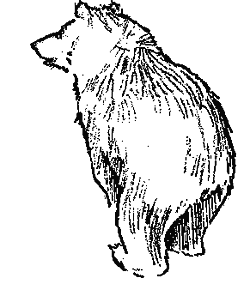 |
|
grizzly bear
|
National processes
Until 1977, there was no department, agency, or group in Canada whose mandate was to
regularly review the situation of wildlife in jeopardy.
A committee was formed in 1978 to review the status of wildlife in Canada,
called the Committee on the Status of Endangered Wildlife in Canada
(COSEWIC) (pronounced ko-see-wick).
COSEWIC is an independent organization of wildlife experts from universities and museums,
provinces and territories, conservation organizations, and four federal agencies
(Canadian Wildlife Service, Parks Canada Agency, Department of
Fisheries and Oceans, and the Federal Biosystematic Partnership).
In 2000, a new member with expertise
in Aboriginal traditional knowledge was added.
COSEWIC is responsible for evaluating the research on species at risk in Canada, and can commission experts in their field (e.g., plants or mammal species) to
prepare what are called "Species Status Reports" which help the
Committee assess the level of risk of extinction for Canada's wildlife species. These status reports focus on the following aspects:
a species' biology; habitat requirements; past and present range; past and present population trends; review of current
protection programs; and threats. Reports are submitted to COSEWIC prior to their annual meeting in the spring, during which time the reports
are reviewed. Since 1978, COSEWIC has considered over 510 species.
The committee determines which species should be classified into one
of the following categories:
Extinct:
A species formerly indigenous to Canada
that no longer exists anywhere.
Extirpated:
A species no longer existing in the wild in
Canada, but occurring elsewhere in the wild.
Endangered:
A species facing imminent extinction or extirpation throughout all or a significant portion of its range.
Threatened:
A species likely to become endangered in Canada if the factors affecting it are not reversed.
Special Concern:
A species of special concern (formerly called
"vulnerable") because of characteristics that make it
particularly sensitive to human activities or natural events.
Other terms are sometimes used by COSEWIC to describe species that are already designated but whose situation has changed.
They are as follows:
Not at Risk (NAR):
A species that has been evaluated and found not be at risk.
Indeterminate:
A designation given if there is insufficient scientific information to support status designation.
De-listed:
A species previously designated by COSEWIC whose national status is no longer at risk, and is removed from the list. For example, from 1978 through 1986, the white pelican was designated "threatened." Recovery programs succeeded and the pelican was de-listed by COSEWIC in 1987.
Downlisted/(Uplisted):
A species previously designated by COSEWIC whose national status moves from one category to a less
(or more) serious category. For example, designated as threatened from 1977 to 1991, the tundra peregrine
falcon was downlisted to vulnerable (special concern) in 1992. More recently, the Banff Springs Snail, once a threatened species, was uplisted to the more serious endangered category in May, 2000.
|
Species disappearing from southern areas are mostly carnivores:
wolverine, wolf, cougar, American black bear and bobcat.
The "small" species have tended also to disappear from southern areas. An inventory of amphibian and reptile species conducted in Point Pelee National Park in the 1970s found that one-third of the species present earlier in the century were no longer there; further monitoring has confirmed this loss.
National parks and reserves are home to many rare, threatened, or endangered species and
their habitats:
-
The whooping crane in Wood Buffalo National Park
-
The American white pelican in Prince Albert National Park (once a
species at risk, but not anymore. See Theme 4, "What's Happening
for...?")
-
Mixed-grass prairie in Grasslands National Park
-
Carolinian forest in Point Pelee National Park
|
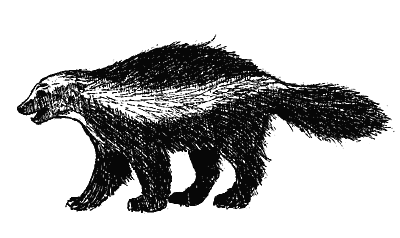 |
|
wolverine
|
One thing to note is that COSEWIC is a committee and, as
such, cannot make laws or regulations to protect species, nor can it enforce laws.
However, with the passage of the federal Species at Risk Act in 2002,
COSEWIC designations have greater importance (see Theme 4).
COSEWIC designations and recommendations are used by jurisdictions
to develop recovery programs as well as regulations to protect species and habitats.
For more on COSEWIC and to view their lists, visit their Web site (www.cosewic.gc.ca).
A national program that undertakes recovery efforts for species at risk is the REcovery of Nationally Endangered Wildlife. RENEW was established in 1988 in response to the growing number of endangered land vertebrate species
in Canada, and the need for co-operative efforts to protect and recover these
species. RENEW involves federal,
provincial, territorial governments,
and NGOs in co-ordinating wildlife management efforts to identify priorities, develop recovery plans, and to provide information to ensure the survival of endangered terrestrial vertebrate
species across Canada.
RENEW's activities stem from COSEWIC's work.
Its mandate has the following national objectives:
-
No endangered species in Canada will be allowed to become extirpated or extinct;
-
no new species will be allowed to become threatened or uplisted to endangered;
-
when and where possible, extirpated species will be reintroduced to Canada;
-
recovery plans will be prepared
for all threatened and endangered species; and
-
recovery programs will be initiated, where feasible, to work towards removing species from threatened, endangered, or extirpated status.
|
Long before COSEWIC
was established, Canada's beaver populations became endangered, mostly due to
a demand for their fur. Men's fashions of the day included beaver hats. For those hats, Canada almost lost a species that is the symbol of our
country. Check out Canada's Coat of Arms, and the nearest Canadian nickel!
In the early 1930s, governments ended trapping seasons and reintroduced
beaver into areas where they had literally been "trapped
out." Today, beaver populations are healthy, and they are now once again legally trapped. Without that government action the story would have had a very different ending.
|
Provincial processes
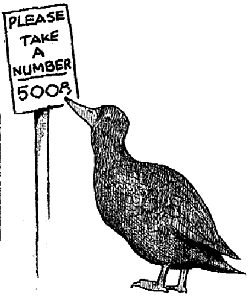 |
|
black duck
|
The Ontario Ministry of Natural Resources (OMNR or MNR) also has a committee to evaluate
species at risk.
This provincial technical review committee--whose purpose is to ensure
that scientifically based approaches are taken with regard to evaluating and recovering
species at risk--is known as the Committee on the Status of Species-
at-Risk in Ontario, or COSSARO.
COSSARO makes recommendations to the MNR for designation, using
categories and definitions for species at risk.
But they differ somewhat from COSEWIC designations, as follows:
Extinct:
Any species formerly native to Ontario that no longer exists [anywhere].
Extirpated:
Any native species no longer existing in the wild in Ontario, but existing elsewhere in the wild.
Endangered:
Any native species that, on the basis of the best available scientific evidence, is at risk of extinction or extirpation throughout all or a significant portion of its Ontario range if the limiting factors are not reversed.
Threatened:
Any native species that, on the basis of the best available scientific evidence, is at risk of becoming endangered throughout all or a significant portion of its Ontario range if the limiting factors are not reversed.
Vulnerable:
Any native species that, on the basis of the best available scientific evidence, is a species of special concern in Ontario, but is not a threatened or endangered species.
A simplified summary of the MNR process:
-
Undertake surveys, inventories, monitoring for species at risk (ongoing);
-
prepare status report;
-
evaluate status report;
-
make recommendations for designation;
-
landowners of habitat where species at risk occur are contacted prior to regulation (endangered species only);
-
post notice of proposed designation(s) on the Environmental Registry;
-
obtain MNR and/or cabinet approvals to regulate the species under the Endangered Species Act, or to assign another designation.
In Ontario, a species either has an MNR designation or it does not, and it may or may not have a COSEWIC
designation. Further, the two designations may not be the same due to
differences in how criteria is interpreted between COSSARO and COSEWIC, when the species was evaluated, or
other reasons.
Other species, too, may be generally rare throughout the province, or in a portion of the province, and may be species important to the biodiversity of the areas in which they are found, but not designated as species at risk.
To view Ministry lists of provincially-designated species visit the MNR Web site (www.mnr.gov.on.ca).
This is where the Natural Heritage Information Centre (NHIC) comes in.
It is part of the Natural Resources Information Branch of the Ontario Ministry of Natural Resources and plays an important role in establishing an
inventory of Ontario's natural areas and species--classifying species according to global and provincial distribution.
Established in 1993 as a joint venture between the MNR and three non-government organizations--Nature Conservancy of Canada, Natural Heritage League,
and The Nature Conservancy--the NHIC has developed a standard ranking system for all Ontario vertebrates, rare vascular and non-vascular plants, insects, and natural areas such as wetlands and vegetation communities. These are classified according to the following categories and definitions:
G1: globally extremely rare
G2: globally very rare
G3: globally uncommon
S1: provincially extremely rare
L: limited global distribution
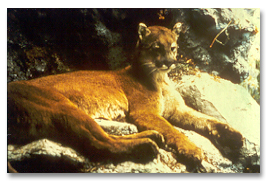 |
|
eastern cougar.
Photo: FON |
In addition to data on global/provincial species and habitats, the NHIC also breaks down the
data by county, providing an invaluable tool for municipalities and private landowners to find out what species occur in their area.
These various lists--COSEWIC,
COSSARO, and NHIC--taken together form a crucial source of information on the status of species
and species at risk in the province and throughout the country.
What you can do!
Invite
a conservation officer or stewardship council member
to address the class or school about what is currently happening with a species at risk program they are involved in. Promote the event with posters or announcements around
the neighbourhood.
Visit
a museum with a "trade in endangered species" display (e.g.,
Ottawa's Museum of Nature) and familiarize
yourself with what the items look like.
In Ontario, these displays can be found in many of the larger museums, zoos, airports, and most Canada Customs offices at border crossing points.
Check out
a local shopping area--or even one in
a national park--to identify articles made from species at risk.
Do not buy them! Buying them brings those species that much closer to extinction. Instead, ask the owner or manager whether they are aware that the product is from an endangered species.
Look for
and read the regulations handed out with international airline tickets that describe what
can and cannot be brought into or taken out of a country.
|
|
|
|